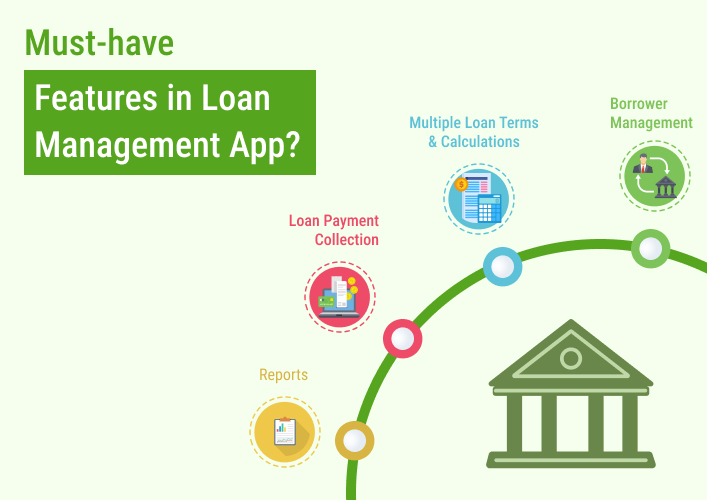Types of Loan Management Apps
Following are the steps for creating a loan management app:
- Analyzing the loan app’s requirements and the regulatory environment is step one.
- Thereafter, you need to plan the outcomes, tasks, timeframes, resources, etc.
- Build the app with the best possible combination of features, architecture, user experience, and technology.
- Go through the steps of quality assurance after programming.
- Ensure that information about loans can be transferred from one system to another. Check interoperability with other applications and appropriate external systems. Furthermore, ensure the security of the financial lending system.
Must-have Features in Loan Management Apps



Borrower Management
This is the most important feature of the app. A borrower can register and apply for a loan by filling out a form. Collection and storage of borrower’s data. Data from borrower profiles and documents, such as a cash flow statement and balance sheet or a bank account and wage slips, is extracted and validated using artificial intelligence. A credit score of the borrower must be calculated.
Multiple Loan Terms & Calculations
This feature will help with a wide variety of local and international loan types. Different loans have different terms. The term ‘personal loan’ encompasses a wide variety of credit options, from unsecured loans for everyday expenses to secured loans for major purchases. Furthermore, it can give AI-based advice on loan conditions to individual borrowers. Payment reminders, monthly statements, and payment collection are all a part of this service.
Loan Payment Collection
The ability to successfully collect payments is essential to the success of any organization. The app used to handle loans should remind borrowers about upcoming payments, compute late fines, factor in applicable taxes, and send out payment-due reminders. The borrowers’ payments may be automatically deducted from their bank accounts using third-party interfaces that can be added to the app.
Reports
It should have the ability to generate reports based on your company’s contacts with other organizations and people, analyze the profitability, and track the progress of payment. Cloud integration is the key to constructing the reporting functionalities. The cloud makes it easy for people to view and share information.
Conclusion
Building a useful app for loan management requires careful preparation and execution, but the result is worth the effort for financial institutions and borrowers. Incorporating crucial elements like loan application processing, borrower verification, payback monitoring, and reporting, as well as establishing rigorous security measures to secure sensitive financial data, is important for success. The functionality and user experience of the app may be improved over time through regular updates, bug patches, and input from users. Hire an app development company for your upcoming loan management app project.
FAQs
How long does it take to create an app for loan management?
Which technologies to use for developing a loan management app?
How to ensure the security of financial data in the app?
Should I develop an app for multiple platforms?
How to handle regulatory compliance issues?
Shivangi is a passionate Copywriter at Alian Software with expertise in technical copywriting. She shares information that is easy to understand regarding business, technology, and trends.